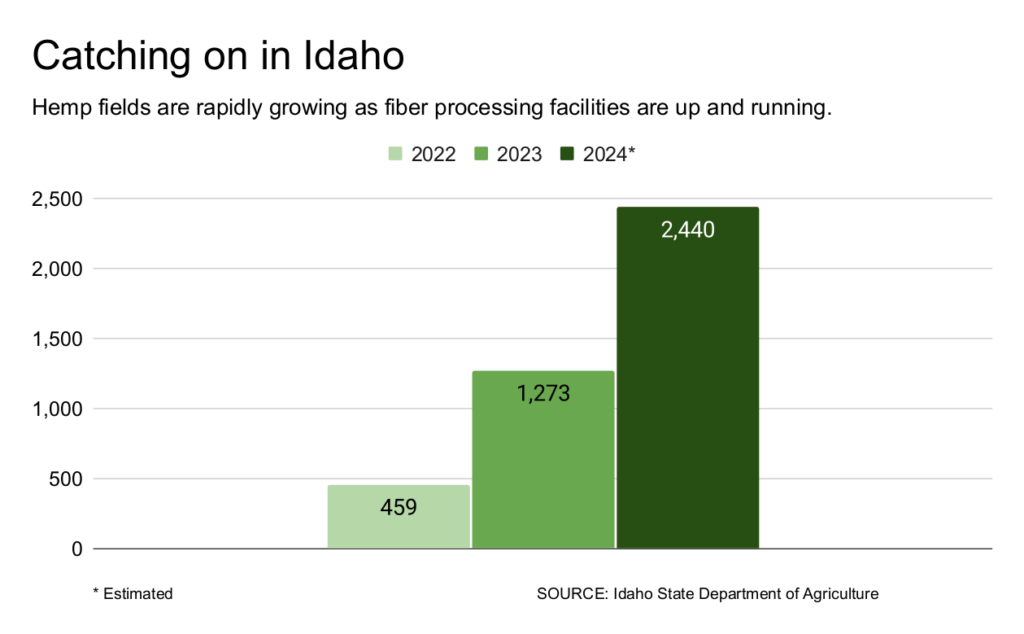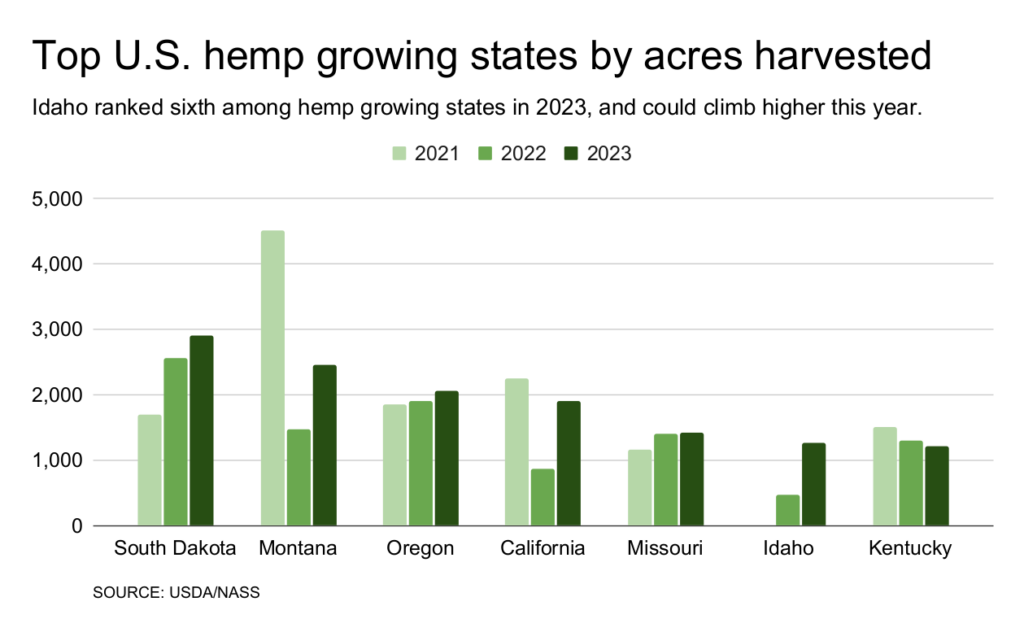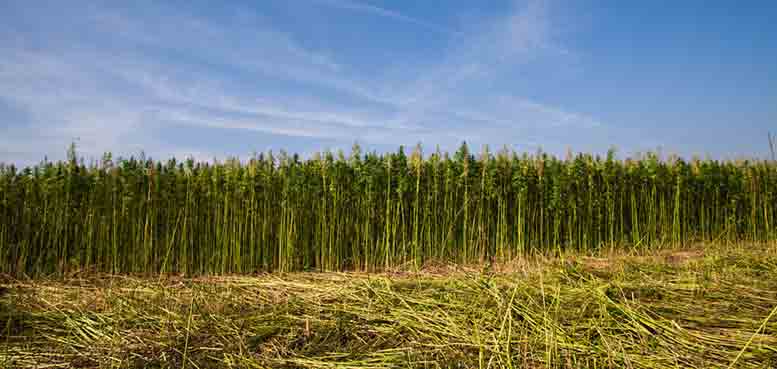Late-comer Idaho has joined the ranks of leading hemp states in the U.S., with more than 2,440 acres licensed this year, according to the state’s agriculture department.
Compared to last year, that would roughly double the hemp crop in Idaho, the last state in the union to set up a hemp program, in 2021. Idaho farmers first dipped their toes into hemp in 2022, when 450 acres were planted, and put in 1,273 acres in 2023, when it ranked as the nation’s sixth-largest grower.
“The fiber varieties have taken off, and that’s what seems to grow very well here,” Greg Blahato of the Idaho Department of Agriculture (ISDA), who manages the state’s hemp program, told Big Country News.
Climate suitable for hemp
While hemp grows well in Idaho’s climate, farmers are still experimenting with how to best harvest the plant’s stalks. Growers have had issues with crops being too green or wet during harvest time, according to the ISDA.
When Idaho farmers started with hemp in 2022, most grew flower varieties for CBD production. About 10% of those crops came in over the 0.3% limit for THC and had to be destroyed. As farmers turned mainly to fiber in 2023, no crops tested over the limit, ISDA said.
“From the regulatory side, we didn’t see any issues with the crop last year,” said Casey Monn, ISDA’s hemp bureau chief.

Processors are online
While hemp fields are spread out in many parts of Idaho, most are in the south-central part of the state. That’s where building products maker Hempitecture opened a 33,000-square-foot processing facility last year at Jerome. A second hemp factory, Idaho Hemp Processing, is in Rexburg, about 200 miles northeast of Jerome.
As hemp begins to work its way into the Idaho farming landscape, it competes with well-established state crops. Idaho farmers grow about 1 million acres of wheat, more than 1 million acres of hay, 500,000 acres of barley, 350,000 acres of corn and about 300,000 acres of potatoes each year.
“Idaho’s agriculture industry is extremely knowledgeable and innovative,” said Braden Jensen, director of governmental affairs at the Idaho Farm Bureau Federation. “Our growers will figure out whether it’s an economically viable crop in our state.”

Strict regulations
Idaho has one of the strictest hemp programs in the nation. The law allows the production and transport of hemp containing up to 0.3% THC, the federal limit. But in-state sale and possession of products containing THC are banned, and it is illegal to sell CBD.
Prospective licensees must get an Idaho State Police or FBI background check no more than 60 days before applying for a license. They must also identify and provide background-check details on persons managing operations, and maps of crop plots and facilities.
ISDA conducts inspections and collects samples no more than 30 days before harvest, which can begin only after those procedures are complete. The agency also manages lab testing, sampling and disposal. Once sampled, hemp crops hemp must then be harvested within 30 days, or re-sampled. Licensees must receive notification their samples are THC compliant before their outputs can can be sold.
ISDA also carries out annual inspections among handler licensees, and may take samples of any lots on hand. Producers and handlers can request a re-test of original samples retained by the lab.
License applicants pay a basic fee of $100; growers pay an additional $500 for an annual license and $250 per lot for inspection. Processors pay $1,000 for a license and $500 for an annual inspection.

